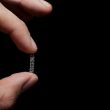Peripheral artery disease (PAD) is no longer a systemic manifestation of atherosclerosis. In fact, 2 in 3 people with PAD have concomitant heart disease, and 1 in 3 people has concomitant PAD. To understand the real dimension of this problem, we should know that PAD patients have 60% more risk of acute myocardial infarction<a href="https://solaci.org/en/2017/08/22/risk-of-thrombosis-and-bleeding-with-peripheral-artery-disease-and-concomitants/" title="Read more" >...</a>
BVS: Controvertial Scaffold
Courtesy of Dr. Agustín Vecchia. The advent of resorbable vascular scaffolds (BVS) generated high expectations among interventionists because of its potential advantages over bare metal stents. However, when comparing BVS against the Xience stent, we observed an increased rate of events associated to the first device, to their detriment. Among the reasons behind this poor<a href="https://solaci.org/en/2017/07/07/bvs-controvertial-scaffold/" title="Read more" >...</a>
Leaders Free ACS: Good Results for the Polymer-Free Stent at 2 Years in ACS
Courtesy of the SBHCI. Guidelines recommend dual antiplatelet therapy for a year in patients admitted with coronary acute syndrome. However, patients at high risk for bleeding who receive coronary angioplasty have been historically excluded from studies. The new polymer-free stent BioFreedom allows for the reduction of dual antiplatelet therapy time, due to rapid drug elution<a href="https://solaci.org/en/2017/05/30/leaders-free-acs-good-results-for-the-polymer-free-stent-at-2-years-in-acs/" title="Read more" >...</a>
Peripheral artery disease associated to ischemic and bleeding events after DES implantation
Patients with peripheral artery disease (PAD) have higher rates of cardiovascular events after DES implantation, which could be explained partly by higher platelet reactivity. The present work studies the relationship between platelet reactivity and clinical events after PCI in patients with and without a history of peripheral artery disease. The ADAPT-DES study (Assessment of<a href="https://solaci.org/en/2017/04/25/peripheral-artery-disease-associated-to-ischemic-and-bleeding-events-after-des-implantation/" title="Read more" >...</a>
Bioresorbable scaffolds with drug-eluting stents: do they entail a higher thrombosis risk?
Courtesy of Dr. Leiva. Bioresorbable scaffolds with drug-eluting stents (bioresorbable vascular scaffolds, BVS) have been added to the list of endovascular treatment options for coronary disease. The ABSORB III trial showed the non-inferiority of this stent type to everolimus-eluting metallic stents as regards target-lesion revascularization (TLR) at one year. However, reports have suggested a higher<a href="https://solaci.org/en/2017/04/21/bioresorbable-scaffolds-with-drug-eluting-stents-do-they-entail-a-higher-thrombosis-risk/" title="Read more" >...</a>
Percutaneous Mitral Annuloplasty: First Results in Humans
Courtesy of Dr. Agustín Vecchia. In the last few years, new percutaneous treatment options for mitral regurgitation have emerged. Transcatheter mitral annuloplasty with various devices is a relatively simple procedure that could compress the origin of circumflex artery branches due to the different orientation of mitral corners and the coronary sinus. The following work by Park<a href="https://solaci.org/en/2017/03/27/percutaneous-mitral-annuloplasty-first-results-in-humans/" title="Read more" >...</a>
Anticoagulated Patients with Atrial Fibrillation Undergoing Angioplasty: How to Treat Them
In patients with atrial fibrillation undergoing coronary angioplasty with stents, standard anticoagulation with vitamin K antagonists plus dual antiplatelet therapy with a P2Y12 inhibitor and aspirin reduces the risk of stent thrombosis and stroke, but increases the risk of bleeding. The effectiveness and safety of anticoagulation with rivaroxaban plus one or two antiplatelet agents<a href="https://solaci.org/en/2016/12/26/anticoagulated-patients-with-atrial-fibrillation-undergoing-angioplasty-how-to-treat-them/" title="Read more" >...</a>
Is It Safe to Discontinue Ticagrelor One Day Before CABG?
Courtesy of Dr. Agustín Vecchia. Nearly 10% of patients with acute coronary syndrome (ACS) require surgery. Managing periprocedural dual antiplatelet therapy (DAPT) in ACS patients is controversial and, to date, there are no randomized trials in this regard. Guidelines recommend ticagrelor discontinuation five days prior surgery and in the most emblematic work on this drug<a href="https://solaci.org/en/2016/10/05/is-it-safe-to-discontinue-ticagrelor-one-day-before-cabg/" title="Read more" >...</a>
Procedural Complexity Affects Decision-Making Regarding DAPT Duration
Much of the speculation around the way of individualizing dual antiplatelet therapy (DAPT) duration after coronary angioplasty has focused on clinical parameters (e. g., diabetes), but a new study published by the Journal of the American College of Cardiology (JACC) and presented at the last European Society of Cardiology (ESC) Congress warns about anatomical factors as<a href="https://solaci.org/en/2016/09/22/procedural-complexity-affects-decision-making-regarding-dapt-duration/" title="Read more" >...</a>
Six Month DAPT Enough for Nobori BES
Patients treated with A9 biolimus eluting stent with biodegradable polymer (Nobori, Terumo) can receive only six months of dual antiplatelet therapy (DAPT) with no increase in adverse events, compared against more prolonged treatments. The net adverse clinical and cerebrovascular events that included all cause death, MI, cerebrovascular events and major bleeding was: 1.92% for<a href="https://solaci.org/en/2016/09/07/six-month-dapt-enough-for-nobori-bes/" title="Read more" >...</a>









